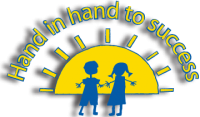Intent
Our Maths curriculum aims to develop confident, independent mathematicians with the knowledge and skills to be successful at secondary school. To ensure every student is successful we focus on three key variables: curriculum design, teaching and small step approach.
Systematic curriculum design is essential for effective teaching of mathematics. Lessons must build upon prior learning and progress toward a clear goal. Lessons at Barn Croft are based on the NCETM’s curriculum prioritisation, taught in a sequenced progression of small steps. The curriculum prioritisation establishes the basic requirements for each year group: the instructional schedule (what to teach and when to teach it), the difficulty level and the progression of skills. Secure curriculum prioritisation in small steps leads to effective lesson planning, effective lesson planning leads to effective teaching which leads to mathematical success.
To ensure students are taught at the correct instructional level, and receive the support they need, they are regularly assessed during lessons, from completed tasks and using termly, summative assessments. This means that students always receive the help, and challenge, they need to succeed.
Teaching at Barn Croft is based on research validated practices. Every lesson contains review of prior material, clear modelling of new material using manipulatives, if relevant, talk and explore opportunities and application to problem solving and reasoning. Lesson tasks are separated into paired, group or individual tasks. Mathematics teaching focuses on the three essentials of a high-quality mathematics education outlined in the National Curriculum: fluency, mathematical reasoning and problem solving. Teachers teach engaging, fast-paced and challenging lessons which means that children are ready for the next lesson and make good progress.
Implementation
How we teach mathematics in Early Years and Key Stage 1
In Early Years and Key Stage 1, new material is taught according to the principles of Jerome Bruner’s concrete, pictorial and abstract schema (CPA). Teaching begins with hands-on activities, progresses to pictorial representations before, finally, becoming abstract. Children will take small steps on their way to mastering the curriculum. Our approach means that every child has a sound understanding of the principles behind fundamental mathematical concepts.
At this stage it is crucial children secure their early number fluency. For this to happen, Reception, Year 1 and Year 2 are taught Maths Fluency from NCETM’s Mastering Number programme three times per week and teachers provide children with regular review and practice (in addition to daily maths lessons).
Due to our commitment to the CPA and small step approach, and because of the emphasis we place on the teaching of number fluency, children will leave Key Stage 1 with the knowledge and skills they need to be successful in Key Stage 2.
How we teach mathematics in lower Key Stage 2 – Years 3 and 4
Lower Key Stage 2 is a crucial stage in the development of students’ mathematical understanding. To ensure successful transition, work in Key Stage 1 is built upon in small steps, while work in upper Key Stage 2 is prepared for. As in Key Stage 1, problem solving and reasoning are a part of every lesson. In research literature the difference between reasoning and problem solving is not always clear; indeed, the terms are often used synonymously. At Barn Croft, we see the two as distinct but mutually reinforcing: reasoning develops problems solving, problem solving develops reasoning.
Reasoning always begins with a question: Why? How do you know? Is there a more efficient approach? What is the same? What is different? Students are not only expected to answer these questions, but to ask them themselves. Our students are encouraged to and familiar with asking these questions because every lesson involves problem solving and reasoning tasks. Problem solving always begins with a task which requires the application of a concept – or, more often the case, multiple concepts – to solve. Fluency with number facts is fundamental to mathematics and therefore fundamental to teaching. In regular number fluency lessons, number facts are taught, reviewed and assessed. To support securing early number facts and fluency, children in Early Years and Key Stage 1 use Numbots to practice their learning from number fluency lessons. To support the teaching and memorisation of times tables facts, we use Times Tables Rockstars in Key Stage 2, as well as in class teaching in number fluency lessons.
How we teach mathematics in upper Key Stage 2 – Years 5 and 6
As a consequence of our curriculum design, teaching and small step approach, students
enter upper Key Stage 2 ready to excel in the final years of their time at primary
school. Lessons follow the same structure and content is taught and revisited in small steps. Problem solving and reasoning opportunities are taught and used daily as well as number fluency sessions, all to build on the previous learning and develop fluent, confident mathematicians. By the time children leave Barn Croft, they are confident, independent mathematicians with all of the skills they need to succeed at secondary school.
Enjoyment of Mathematics
At Barn Croft we strive to instill a love of mathematics through securing number fluency for all children. With these foundations and secure number knowledge, children are able manipulate their knowledge to be able to apply it to any number of problems they encounter. We foster a culture where maths is celebrated and enjoyed, not feared, by modelling positive attitudes, supporting learning and deepening conceptual understanding and providing safe spaces in lessons to explore, talk, investigate, problem solve and reason, with clear support, resources and guidance.
Impact
Maths understanding and skills are assessed daily through formative assessment in class (maths lessons and number fluency lessons) and misconceptions or errors addressed immediately or in the following lesson. Long term planning (NCETM PD material and curriculum prioritisation) is sequenced to revisit and build on skills throughout the year, in small steps. Summative assessments take place termly and are gap analysed to identify areas of strength and weakness and planning and/or topics are adapted in the following weeks to close any gaps. Following assessments and analysis, interventions are put in place for those not meeting age related expectations as well as in class support for those identified as not making enough progress. Reviews are carried out regularly as well as staff training based on subject knowledge audits and gap analysis at class level.

